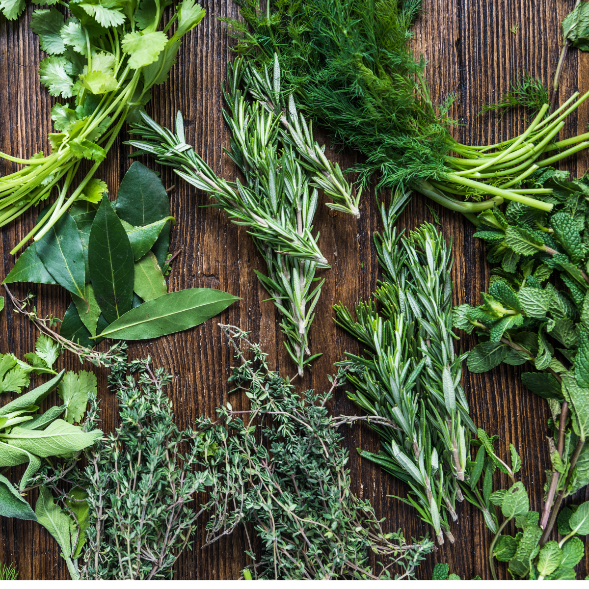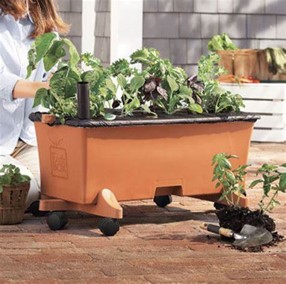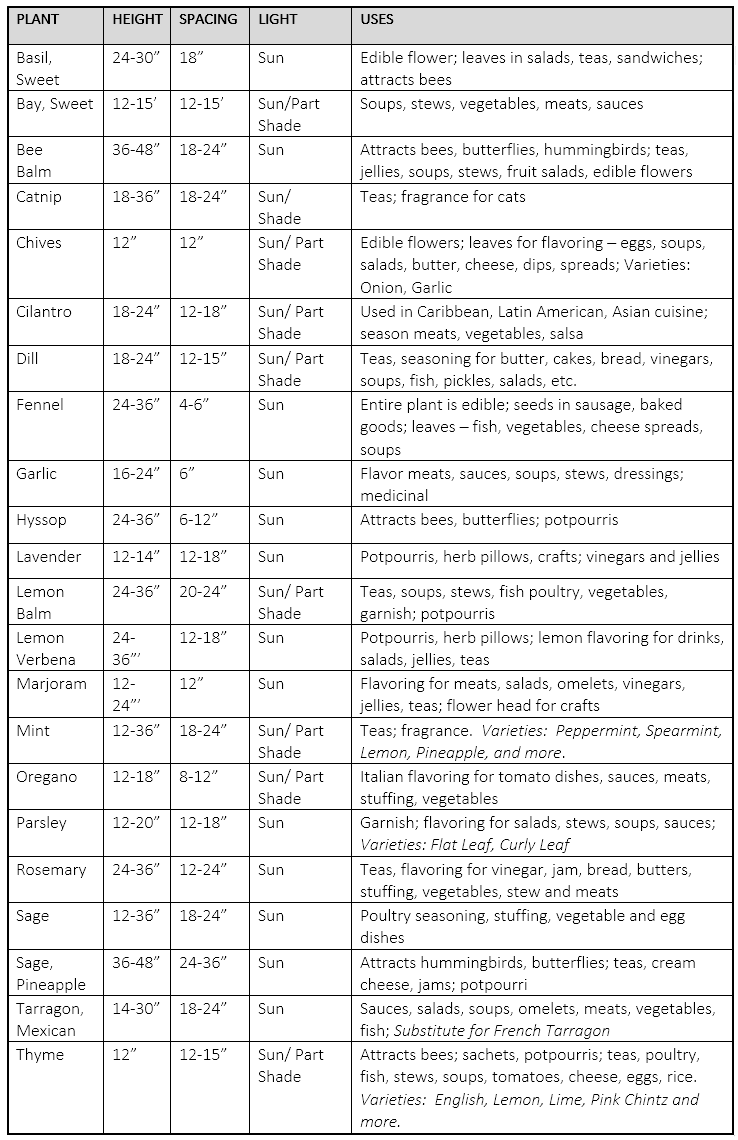 Plants used for the medicinal, savory, or aromatic quality of their roots, leaves, green stems and flowers are considered to be herbs. Practically every culture around the world has a history of some type of herb use. Chinese herb books date from about 2700 B.C. and include extensive lists of medicinal plants. Italy, India, and Thailand are well known for using herbs in cooking. The Greeks and Romans crowned their heroes with dill and laurel. Regardless of the desired usage, growing and harvesting herbs is easy and rewarding. They can be grown in small spaces or containers, intermingled among vegetables and/or flowers in the garden, or even indoors. Herbs are low maintenance plants, being naturally resistant to diseases and pests.
Plants used for the medicinal, savory, or aromatic quality of their roots, leaves, green stems and flowers are considered to be herbs. Practically every culture around the world has a history of some type of herb use. Chinese herb books date from about 2700 B.C. and include extensive lists of medicinal plants. Italy, India, and Thailand are well known for using herbs in cooking. The Greeks and Romans crowned their heroes with dill and laurel. Regardless of the desired usage, growing and harvesting herbs is easy and rewarding. They can be grown in small spaces or containers, intermingled among vegetables and/or flowers in the garden, or even indoors. Herbs are low maintenance plants, being naturally resistant to diseases and pests.
Tips for Planting Herbs:
- Plant herbs in average garden soil with organic matter added to improve texture and drainage.
- Choose a site that receives at least 6 hours of direct sun each day.
- Avoid ground where water stands or runs during heavy rains.
- Compensate for poor drainage with raised beds amended with compost.
- Apply balanced fertilizers sparingly to leafy, fast-growing herbs. Heavy applications of fertilizer, especially those containing large amounts of nitrogen, will decrease the concentration of essential oils in the lush green growth.
- Plan your herb garden by grouping herbs according to light, irrigation, and soil requirements. Most herbs enjoy full sun, but a few tolerate shade.
- Most herbs are grown in SC as annuals. Exceptions: Rosemary, Thyme, Lavender.
- Be aware of the growth habits of the plants to ensure that adequate space is available.
Growing Requirements & Uses of Common Herbs:
Harvesting, Drying & Storing Herbs:
Harvest herbs before they flower for the fullest flavor. Try to harvest early in the day after plants dry off and before it gets hot. Only remove about 1/3 to 1/2 of a stem at one time. Deadheading or removal of flowers as they appear will result in continued production of new leaves suitable for harvest. Use a sharp knife or pruners to make clean cuts.
After harvesting, gently wash the herbs and dry them thoroughly on paper towels. Remove any dead or damaged material. Tie the herbs in loose bunches that allow for good air circulation. Place the bunches into small paper bags with the stem ends sticking out of the top of the bag. Punch holes in the bag to allow for ventilation. The bags help protect the herbs from dust and other contamination while drying. Tie the tops of the bags and hang in a warm, dry, well-ventilated area out of the sun. It may take up to a month for herbs to dry completely.
After herbs are dry, remove the leaves from the stems and package in sealed containers in a cool location. To preserve the full flavor of herbs try to avoid crushing the leaves when packaging. Crush them just prior to using them. When properly stored, most herbs retain their flavor for about a year.
Air drying works best with herbs that do not have a high moisture content, like bay, dill, marjoram, oregano, rosemary and thyme. To retain the best flavor of these herbs, you’ll either need to allow them to dry naturally or use a food dehydrator. Microwave and/or oven drying actually cook the herbs to a degree, diminishing the oil content and flavor.
If you want to preserve herbs with succulent leaves or a high moisture content, such as basil, chives, mint, and tarragon, consider freezing them. It’s easy to do and even quicker than drying. Simply cut off individual leaves, lay them flat on a cookie sheet, cover with wax paper and freeze for about 2 hours. After they have frozen, place them in zip-lock bags and return to the freezer.
 EarthBox Gardening Kit:
EarthBox Gardening Kit:
Consider using the EarthBox for your herb garden, available at Wingard’s! Here’s the pitch… You name it, you can grow it in the EarthBox! Poor soil conditions and small backyards are no match for this patented container gardening system. Developed by commercial farmers and proven in the lab and on the farm, this maintenance-free growing system controls soil conditions and more than doubles the yield of a conventional garden—with less fertilizer, less water, and virtually no effort. Just add plants, water, and sunlight for an easy garden that requires no digging, no weeding, and no guesswork! Unlike other raised bed gardens and planters, the EarthBox gardening system is self-watering, sustainable, and easily moveable. Now that’s one smart garden!


